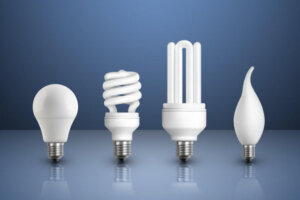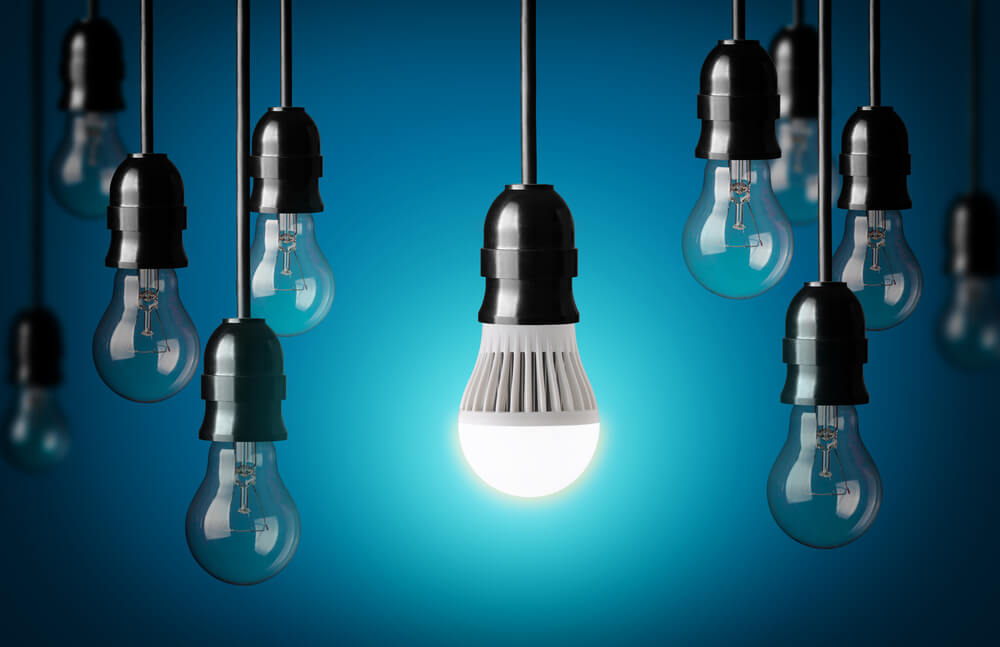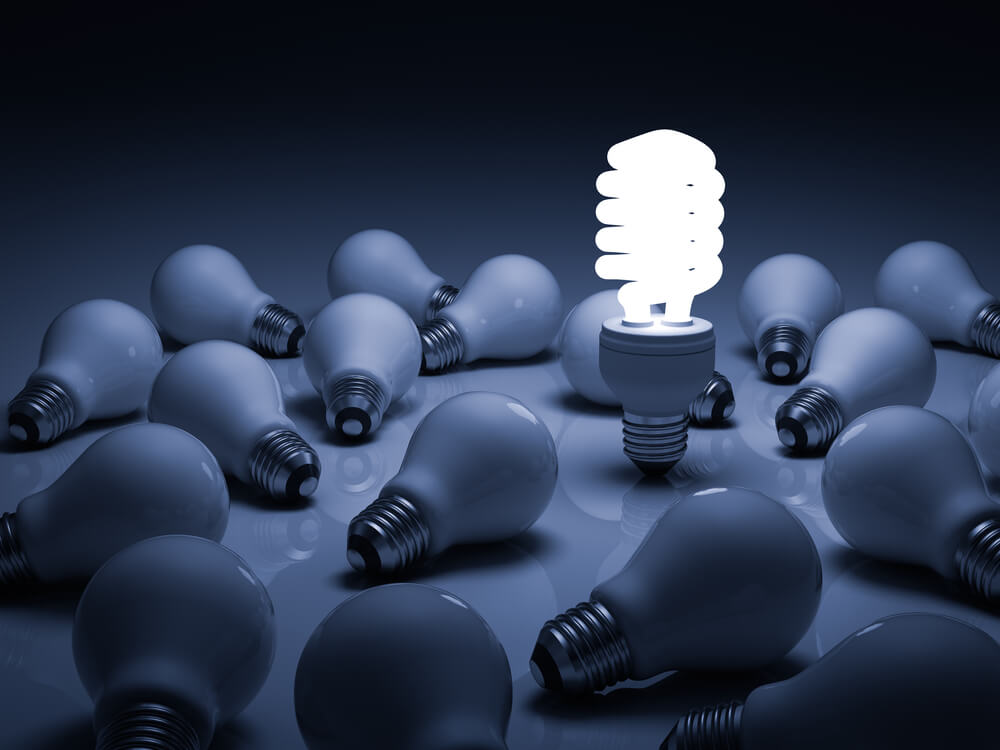Types of Light Bulbs: How to Choose the Best Ones

Knowing about the different types of available light bulbs is vital if you want to illuminate and optimize your spaces. Moreover, you can reduce your energy costs and help the environment too. Keep reading and discover our easy guide to choosing the best light bulbs in order to complement your rooms at home.
Lighting is an essential factor in decor that affects many aspects of our lives; from health and innovation to safety and entertainment. Incandescent bulbs are still popular thanks to their low cost and easy replacement process. However, in recent years, other technologies, such as LED bulbs and fluorescent lamps are also evolving and developing rapidly.
Guide to light bulbs
Light affects various physical and biological processes in the body and can be used to improve our health in many ways. For example, daily tasks like reading and writing are difficult to complete without lighting from artificial sources. Indeed, high-quality artificial light has helped humanity to innovate in new technologies. LED lighting has more benefits to the environment with superb durability.
So, there are many factors to consider when choosing the best light bulbs for your needs, including color, brightness, and emission. Read our guide below to recognize the main types:
1. Incandescent light bulbs
These types of bulbs produce light by heating a metal wire inside. The first incandescent light bulbs consisted of a glass vial with a metal cap. From here, the glass was heated to create an incandescence inside, hence its name.
These bulbs are the least efficient and that’s why their manufacture has been prohibited since 2012. Therefore, if you still find them for sale, it’s only while supplies last. Generally, we don’t recommend using these bulbs because in addition to having a short lifespan, they use more energy.
2. LED light bulbs

These bulbs are one of the latest innovations in lighting technology. They’re flexible semiconductor chips that produce brilliant light with minimal power consumption. Purchasing LED bulbs for your home is a great investment, as they have a lifespan of 50,000 hours and consume up to 80 percent less energy than incandescents.
LED bulbs have several advantages over incandescent bulbs because they emit less heat, produces fewer bluish tones, last longer and consume less energy. Moreover, they’re cooler to the touch, cost less to operate, and they don’t produce any carbon dioxide emissions.
In addition, these bulbs can be dimmed through variable lighting controls to create more welcoming spaces. They’re far more shock resistant than CFL or halogen lamps and require virtually no maintenance, other than periodic replacement.
3. Fluocompact bulbs

CFLs, or compact fluorescent light bulbs, are similar to LEDs, but use mercury instead of semiconductors. The advantages of compact fluorescent lamps include a longer life, reduced heat output, and low cost.
Fluocompact light bulbs are characterized by their low energy consumption. However, they’re not widely used inside homes, beyond kitchens, garages or bathrooms. This is because they emit a cold light that’s usually used in work environments.
4. Halogen bulbs
These are characterized by emitting a dim light with instant ignition. They consume 30 percent less electricity and have a useful life of 2,000 hours. They help create rich contrasts in spaces while illuminating them in a dimmable way. However, in the EU and since 2018, manufacturing halogen bulbs is prohibited.
The best type of light bulb according to your needs
When you think about it, light bulbs provide us with countless benefits and as such, it’s important to know how to choose the best type. Luckily, there’s a wide range to choose from, including LED, fluorescent and mercury.
So, keep in mind everything that we’ve explained and buy the best light bulbs to meet your needs. Just remember to change them periodically and buy quality brands, so that they meet your expectations.
Knowing about the different types of available light bulbs is vital if you want to illuminate and optimize your spaces. Moreover, you can reduce your energy costs and help the environment too. Keep reading and discover our easy guide to choosing the best light bulbs in order to complement your rooms at home.
Lighting is an essential factor in decor that affects many aspects of our lives; from health and innovation to safety and entertainment. Incandescent bulbs are still popular thanks to their low cost and easy replacement process. However, in recent years, other technologies, such as LED bulbs and fluorescent lamps are also evolving and developing rapidly.
Guide to light bulbs
Light affects various physical and biological processes in the body and can be used to improve our health in many ways. For example, daily tasks like reading and writing are difficult to complete without lighting from artificial sources. Indeed, high-quality artificial light has helped humanity to innovate in new technologies. LED lighting has more benefits to the environment with superb durability.
So, there are many factors to consider when choosing the best light bulbs for your needs, including color, brightness, and emission. Read our guide below to recognize the main types:
1. Incandescent light bulbs
These types of bulbs produce light by heating a metal wire inside. The first incandescent light bulbs consisted of a glass vial with a metal cap. From here, the glass was heated to create an incandescence inside, hence its name.
These bulbs are the least efficient and that’s why their manufacture has been prohibited since 2012. Therefore, if you still find them for sale, it’s only while supplies last. Generally, we don’t recommend using these bulbs because in addition to having a short lifespan, they use more energy.
2. LED light bulbs

These bulbs are one of the latest innovations in lighting technology. They’re flexible semiconductor chips that produce brilliant light with minimal power consumption. Purchasing LED bulbs for your home is a great investment, as they have a lifespan of 50,000 hours and consume up to 80 percent less energy than incandescents.
LED bulbs have several advantages over incandescent bulbs because they emit less heat, produces fewer bluish tones, last longer and consume less energy. Moreover, they’re cooler to the touch, cost less to operate, and they don’t produce any carbon dioxide emissions.
In addition, these bulbs can be dimmed through variable lighting controls to create more welcoming spaces. They’re far more shock resistant than CFL or halogen lamps and require virtually no maintenance, other than periodic replacement.
3. Fluocompact bulbs

CFLs, or compact fluorescent light bulbs, are similar to LEDs, but use mercury instead of semiconductors. The advantages of compact fluorescent lamps include a longer life, reduced heat output, and low cost.
Fluocompact light bulbs are characterized by their low energy consumption. However, they’re not widely used inside homes, beyond kitchens, garages or bathrooms. This is because they emit a cold light that’s usually used in work environments.
4. Halogen bulbs
These are characterized by emitting a dim light with instant ignition. They consume 30 percent less electricity and have a useful life of 2,000 hours. They help create rich contrasts in spaces while illuminating them in a dimmable way. However, in the EU and since 2018, manufacturing halogen bulbs is prohibited.
The best type of light bulb according to your needs
When you think about it, light bulbs provide us with countless benefits and as such, it’s important to know how to choose the best type. Luckily, there’s a wide range to choose from, including LED, fluorescent and mercury.
So, keep in mind everything that we’ve explained and buy the best light bulbs to meet your needs. Just remember to change them periodically and buy quality brands, so that they meet your expectations.







